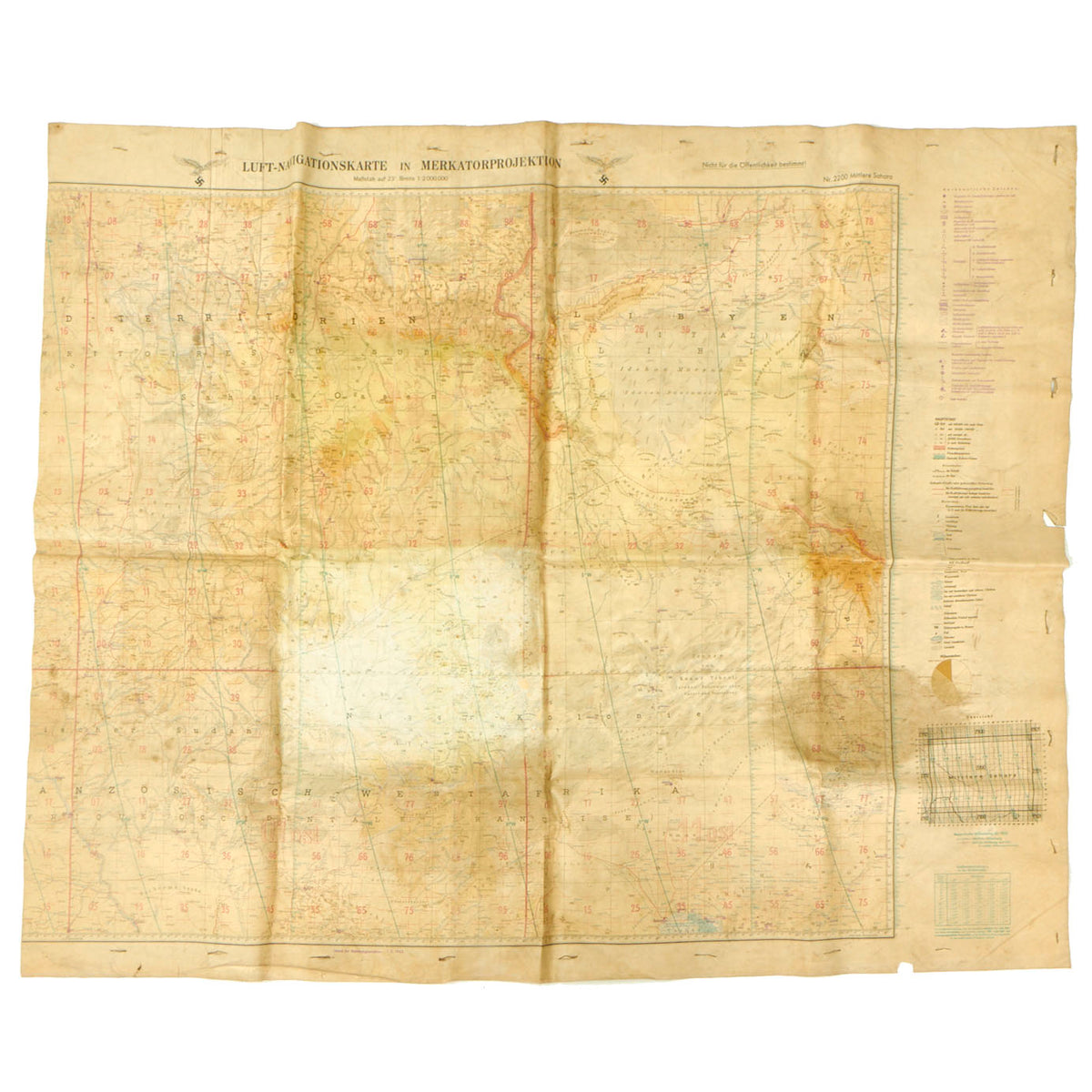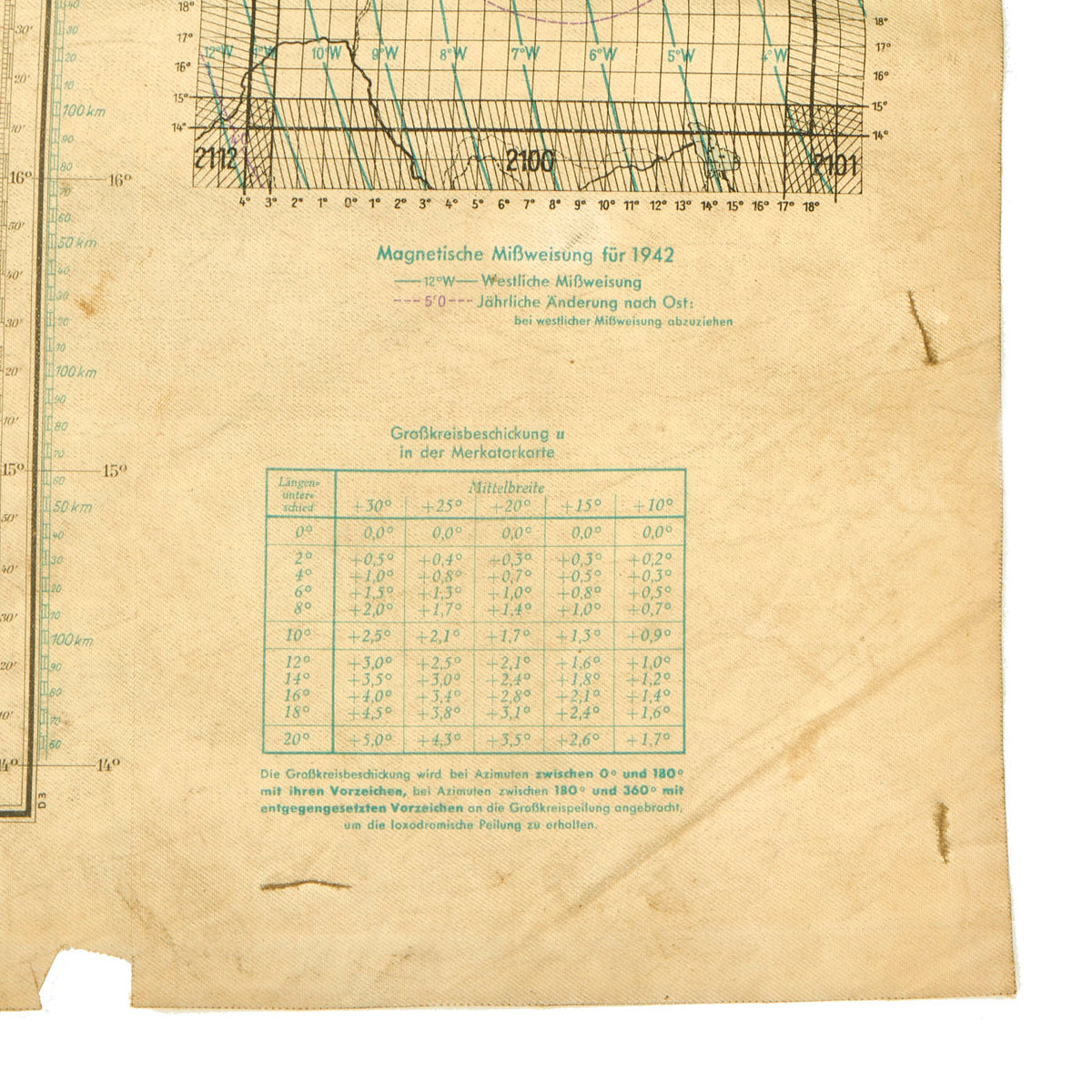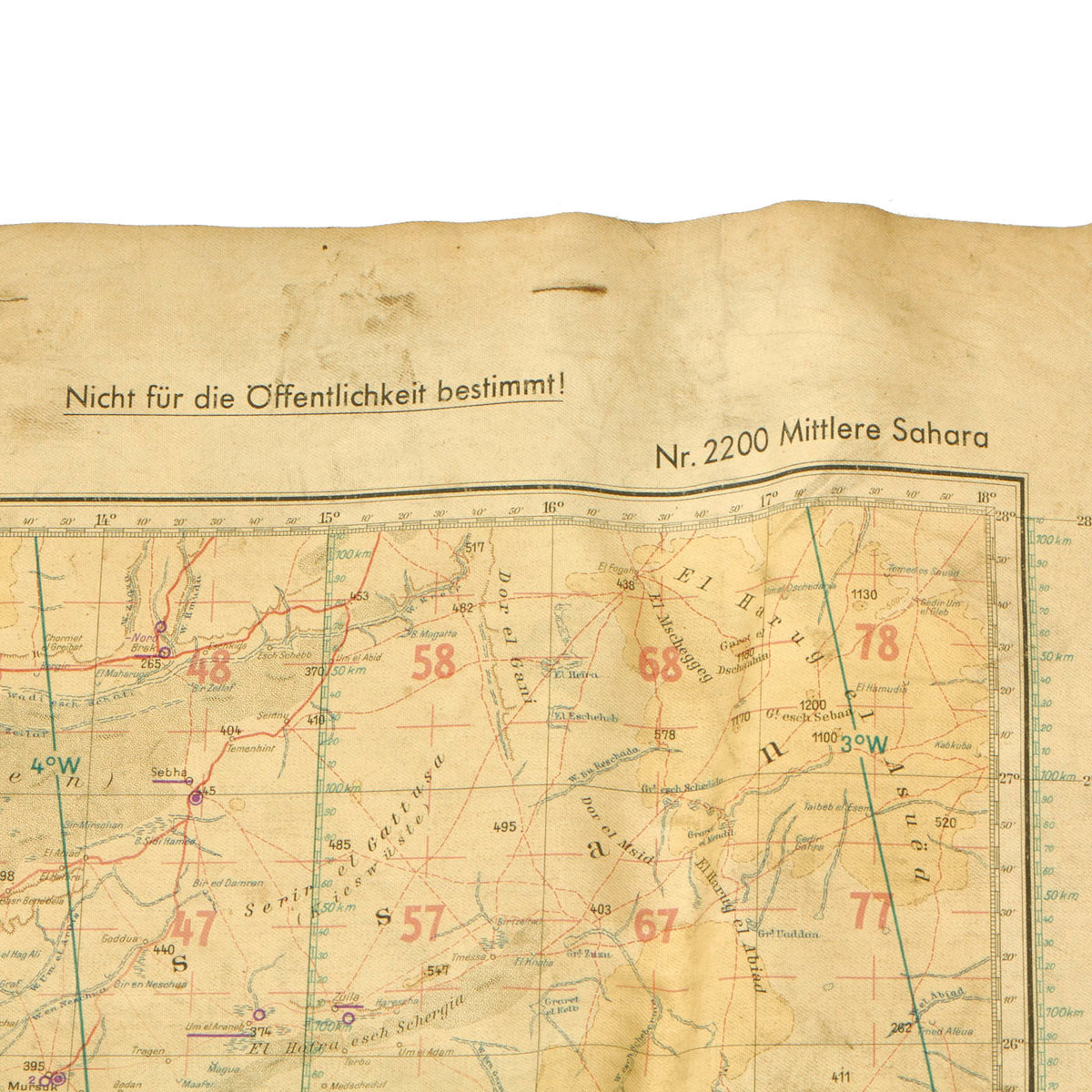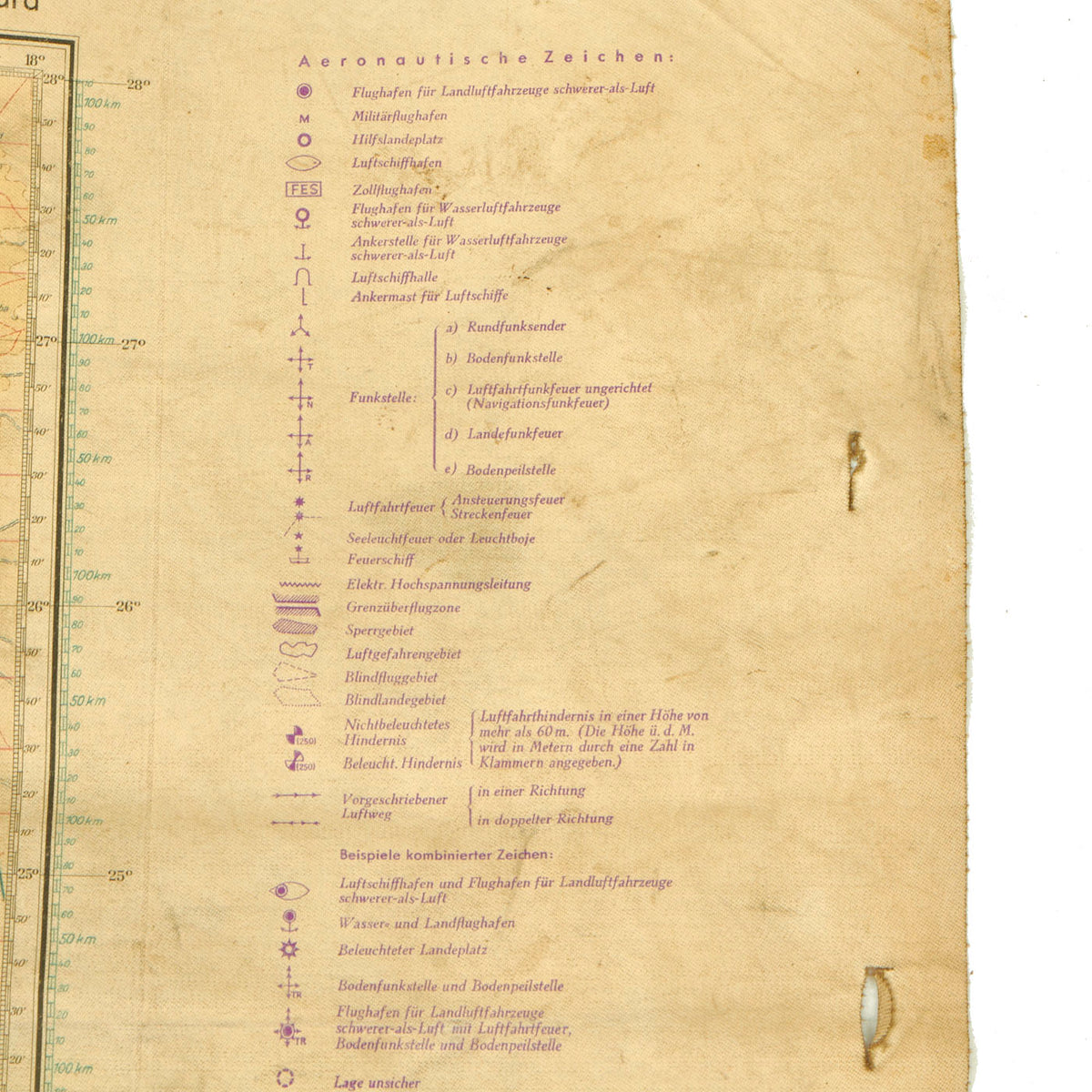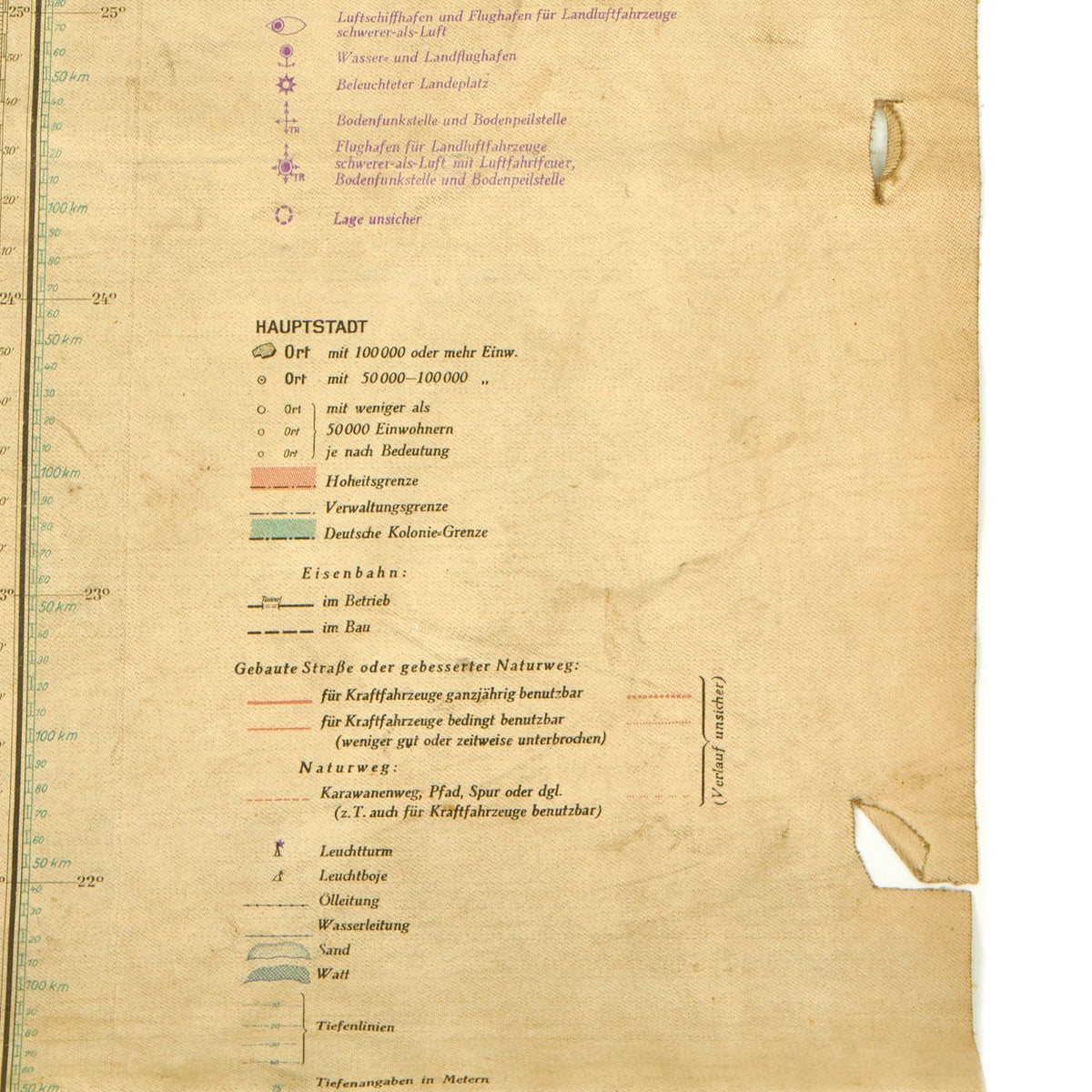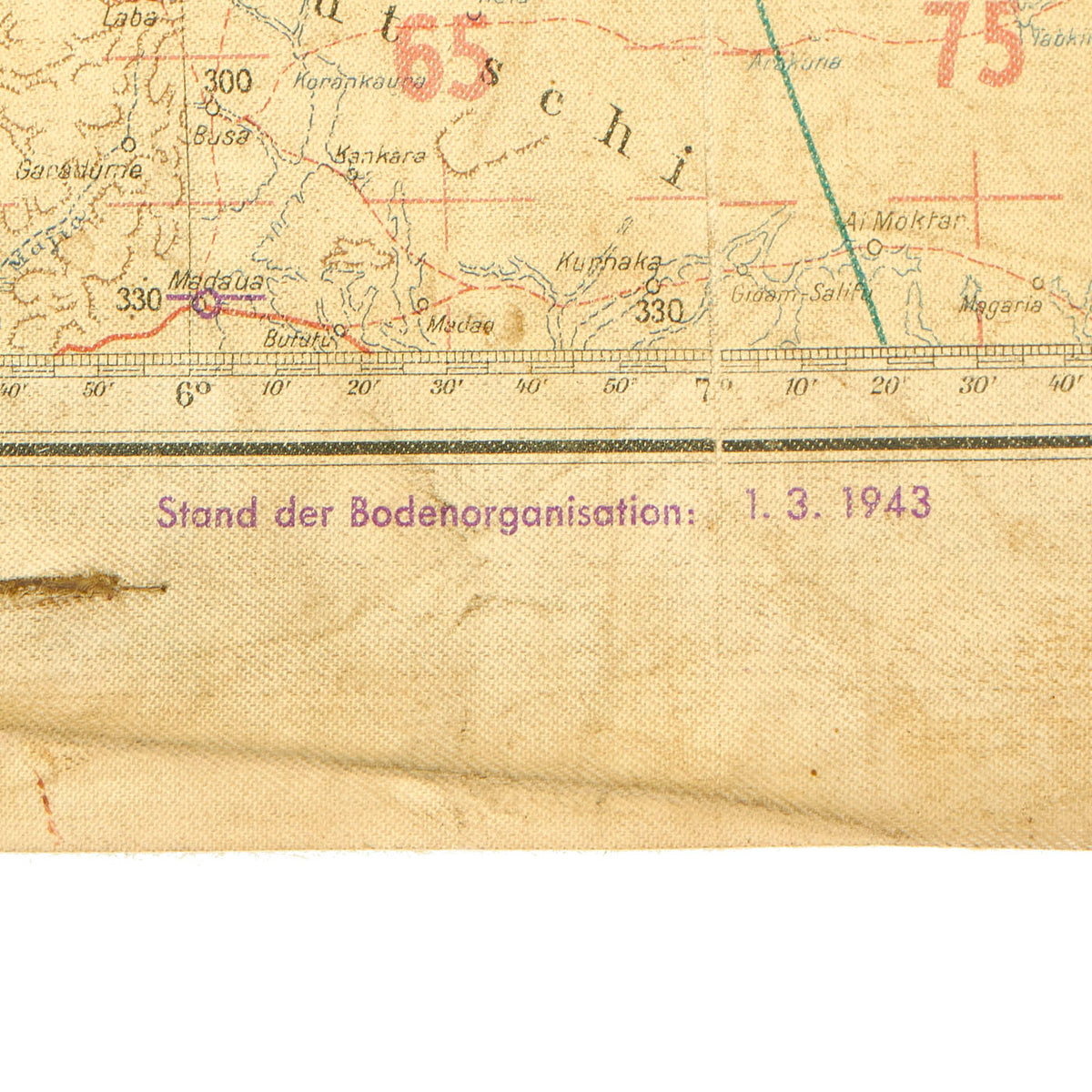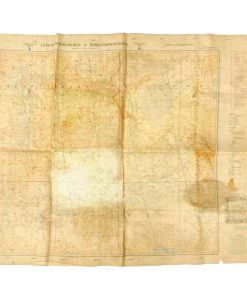Original German WWII Luftwaffe Navigator Soft Laminate Map of North Africa – 36” x 43” Original Items
$ 595,00 $ 178,50
Original Item: Only One Available. The North African campaign of the Second World War took place in North Africa from 10 June 1940 to 13 May 1943. It included campaigns fought in the Libyan and Egyptian deserts (Western Desert Campaign, also known as the Desert War) and in Morocco and Algeria (Operation Torch), as well as Tunisia (Tunisia Campaign).
The campaign was fought between the Allies and the Axis Powers. The Allied war effort was dominated by the British Commonwealth and exiles from German-occupied Europe. The United States officially entered the war in December 1941 and began direct military assistance in North Africa on 11 May 1942.
Fighting in North Africa started with the Italian declaration of war on 10 June 1940. On 14 June, the British Army’s 11th Hussars (assisted by elements of the 1st Royal Tank Regiment, 1st RTR) crossed the border from Egypt into Libya and captured the Italian Fort Capuzzo. This was followed by an Italian counter-offensive into Egypt and the capture of Sidi Barrani in September and its recapture by the British in December following a British Commonwealth counteroffensive, Operation Compass. During Operation Compass, the Italian 10th Army was destroyed and the German Afrika Korps—commanded by Erwin Rommel, who later became known as “The Desert Fox”—was dispatched to North Africa in February 1941 during Operation Sonnenblume to reinforce Italian forces in order to prevent a complete Axis defeat.
A fluctuating series of battles for control of Libya and regions of Egypt followed, reaching a climax in the Second Battle of El Alamein in October 1942 when British Commonwealth forces under the command of Lieutenant-General Bernard Montgomery inflicted a decisive defeat on Rommel’s Afrika Korps and forced its remnants into Tunisia. After the Anglo-American landings (Operation Torch) in North-West Africa in November 1942, and subsequent battles against Vichy France forces (who then changed sides), the Allies encircled several hundred thousand German and Italian personnel in northern Tunisia and finally forced their surrender in May 1943.
Information gleaned via British Ultra code-breaking intelligence proved critical to Allied success in North Africa. Victory for the Allies in this campaign immediately led to the Italian Campaign, which culminated in the downfall of the fascist government in Italy and the elimination of Germany’s main European ally.
The North Africa campaign was often labeled a “war without hate,” a pure military clash in the desert without the partisan roundups and ethnic cleansing happening in Europe. This view has been challenged by recent historians, given that there were indeed many civilians who lived in the region, and the campaign was marked by numerous atrocities and abuses by both German and Italian forces towards prisoners of war and local Jewish, Berber, and Arab populations. They were often motivated by racism, including antisemitism.
This is an excellent example of a completely original soft-laminated aviation map of Denmark. As was done with many Luftwaffe Fliegerkarte, this map is laminated on some sort of soft laminate making it waterproof and so it can be folded and unfolded many times without ripping. Because of the period German lamination, this map is still in very nice condition and completely readable.
The map is dated 1943. This 36” x 43” map has roads, towns/cities, major highways, mountain ranges, bodies of water and other land identifiers featured on the map.
Fast Shipping with Professional Packaging
Thanks to our longstanding association with UPS FedEx DHL, and other major international carriers, we are able to provide a range of shipping options. Our warehouse staff is expertly trained and will wrap your products according to our exact and precise specifications. Prior to shipping, your goods will be thoroughly examined and securely secured. We ship to thousands clients each day across multiple countries. This shows how we're dedicated to be the largest retailer on the internet. Warehouses and distribution centres can be located throughout Europe as well as the USA.
Note: Orders with more than one item will be assigned a processing date depending on the item.
Before shipping before shipping, we'll conduct a thorough inspection of the items you have ordered. Today, the majority of orders will be delivered within 48 hours. The delivery time will be between 3-7 days.
Returns
The stock is dynamic and we cannot completely manage it because multiple stakeholders are involved, including our factory and warehouse. So the actual stock may alter at any time. It's possible that you may not receive your order once the order has been made.
Our policy is valid for a period of 30 days. If you don't receive the product within 30 days, we are not able to issue a refund or an exchange.
You can only return an item if it is unused and in the same state as the day you received it. You must have the item in its original packaging.
Related products
Uncategorized
Uncategorized
Uncategorized
Uncategorized
Uncategorized
Uncategorized
Uncategorized
Uncategorized
Uncategorized
Uncategorized
Uncategorized
Uncategorized
Band of Brothers ORIGINAL GERMAN WWII Le. F.H. 18 10.5cm ARTILLERY PIECE Original Items
Uncategorized
Uncategorized
Australian WWII Owen MK1 Machine Carbine SMG Custom Fabricated Replica with Sling Original Items
Uncategorized
Uncategorized
Angolan Rebel 1970s era 60mm Inert Display Mortar from Angolan Civil War Original Items
Uncategorized
Uncategorized
